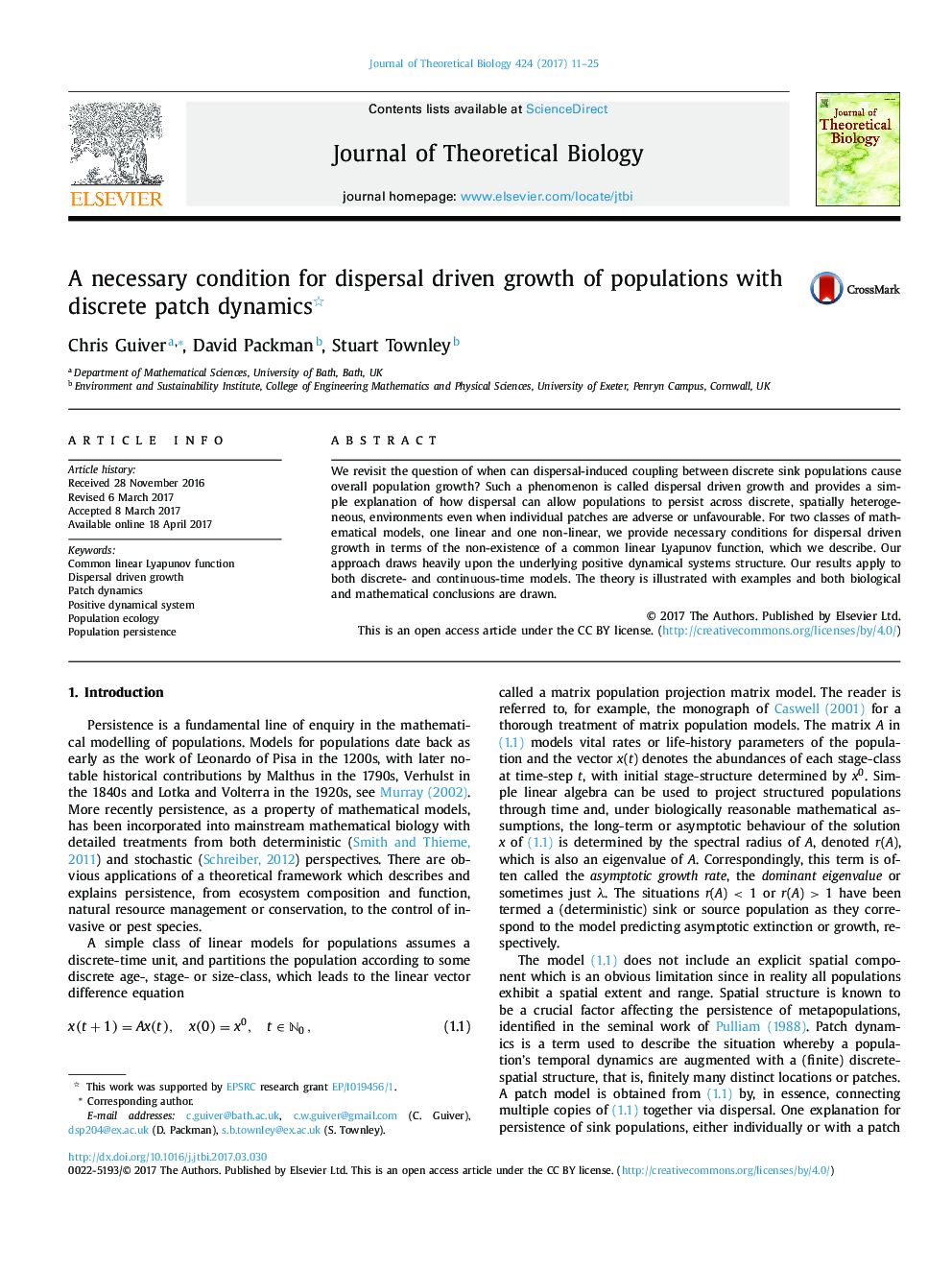| Article ID | Journal | Published Year | Pages | File Type |
|---|---|---|---|---|
| 5760283 | Journal of Theoretical Biology | 2017 | 15 Pages |
Abstract
We revisit the question of when can dispersal-induced coupling between discrete sink populations cause overall population growth? Such a phenomenon is called dispersal driven growth and provides a simple explanation of how dispersal can allow populations to persist across discrete, spatially heterogeneous, environments even when individual patches are adverse or unfavourable. For two classes of mathematical models, one linear and one non-linear, we provide necessary conditions for dispersal driven growth in terms of the non-existence of a common linear Lyapunov function, which we describe. Our approach draws heavily upon the underlying positive dynamical systems structure. Our results apply to both discrete- and continuous-time models. The theory is illustrated with examples and both biological and mathematical conclusions are drawn.
Related Topics
Life Sciences
Agricultural and Biological Sciences
Agricultural and Biological Sciences (General)
Authors
Chris Guiver, David Packman, Stuart Townley,
